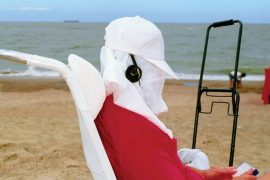by Dario Orlandi
_
A long sequence shot frames the checkered floor of a hotel corridor from below; in the background, a cleaning lady handles a vacuum cleaner while some 40s music resounds in the distance. An English soldier lights an oil lamp and a cigarette and listens thoughtfully to the sound of an approaching bombing. While cleaning the gun, his mind flies to a rugby field on a wavy hill where a child runs carefree in the sunset.
In a hotel room, with an unperturbed face and the ember of a cigarette brushing his fingers, Pink sits motionless; the gaze is broken by terrible memories and the ghost of impending madness. As the woman knocks in vain at the door, a huge wooden portal sways under a mysterious push. The moment the passe-partout rotates in the lock, the sound explosion of In the flesh marks the collapse of a gate and the mad rush of young people that becomes the disordered escape of British soldiers under the bombs of the Luftwaffe in Anzio, in 1944. While chaos rages in a night of riots between young people and the police, the desperate attempt of the English soldier to call (home?) with the military telephone is broken by the thunderous glide of a German bomber.
These are the first nine minutes of the extraordinary musical film made in 1982 by Alan Parker on The Wall by Pink Floyd, the album that marks a cornerstone in Roger Waters’ artistic and personal maturation.
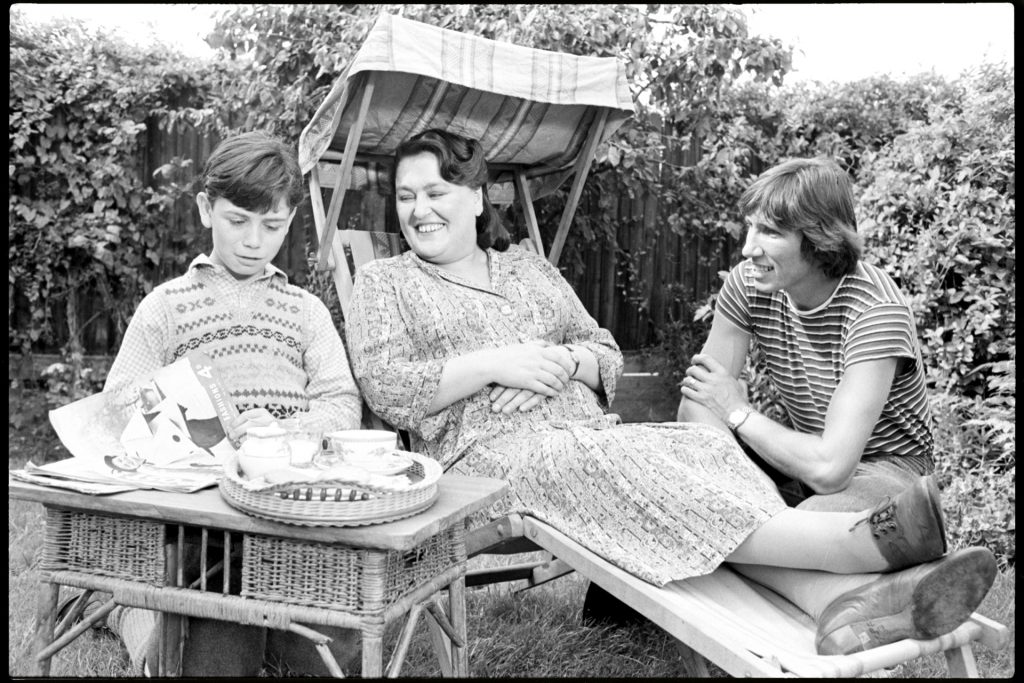
The Wall develops around a fictional plot of three biographies, two historical and one imaginary, in an unprecedented self-analysis path translated into music by the English artist and brought about by an apparently banal episode: on July 6, 1977, during the Montreal stop of the Animals tour, Waters, annoyed by a particularly loud fan, reacts spitting in his face, in a combination of stress and delirium of omnipotence. This episode – for which the musician will apologize profusely – was followed by a profound reflection on the personal ghosts and public responsibilities of a rock star: the never healed wound of the loss of his father in the war, the burden of an oppressive mother and school system, the pressure of the star system.
It is the personal story of Waters and it is the fictional biography of Pink – protagonist of the album and alter ego of the leader of Pink Floyd – who, at the height of success, will begin to give signs of the same insanity that have marked the life of the band’s founder, Syd Barrett.
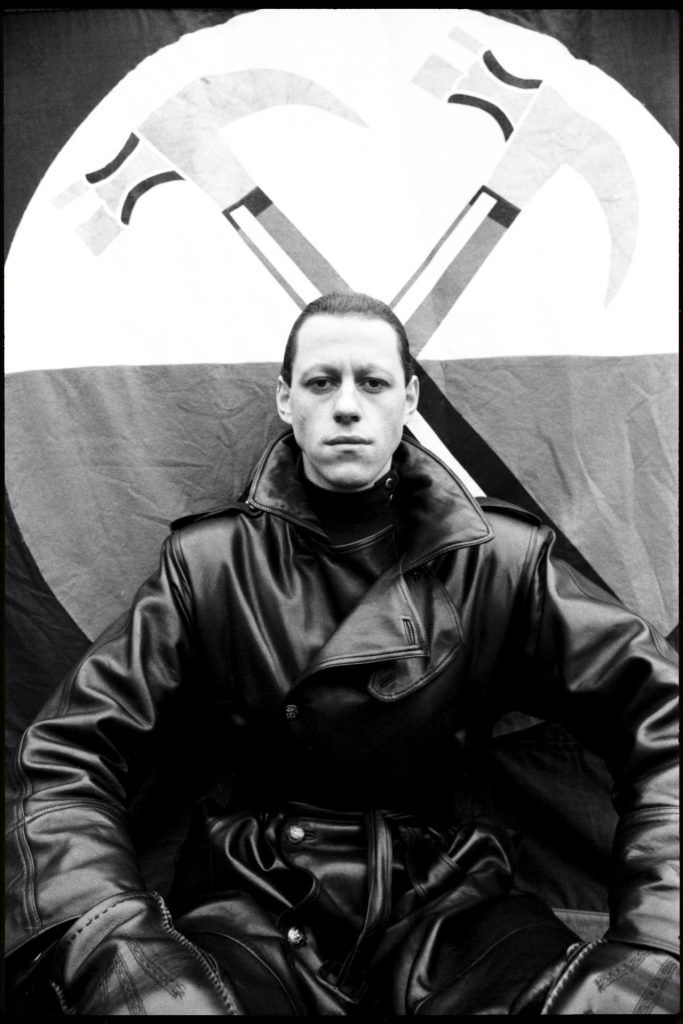
The ghosts of the past, public exposure and madness will transform Pink into a disturbing authoritarian, populist and racist figure, who embodies the extreme consequence of Waters’ personal reflection: those who have suffered walls (Waters / Pink) will tend to create barriers against the outside (Barrett / Pink) with the risk of becoming, in turn, an authoritarian and violent figure, a dangerous builder of walls.
Waters’ courage in narrating himself with such ruthless lucidity in a contemporary symphonic work has few contestants in the history of rock. The visionary intuition and the severe self-analysis that, from a trivial fact on the news, leads the musician to elaborate the theory of the wall from all its perspectives, from domestic and intimate to social and political ones, is extraordinary. An unprecedented gesture of self-criticism in music, a warning against the charm of the Strong Man by one of the most charismatic figures of the ’70s.
Starting from his own fears and mistakes, Waters offers himself naked on the stage of freedom, remembering that the wall is a ghost that winds through a man’s intimacy, goes inexorably through history and finds an ideal bank in mass society. Nobody, not even in free and democratic England, can exempt themselves from the responsibility of vigilance and critical thinking.
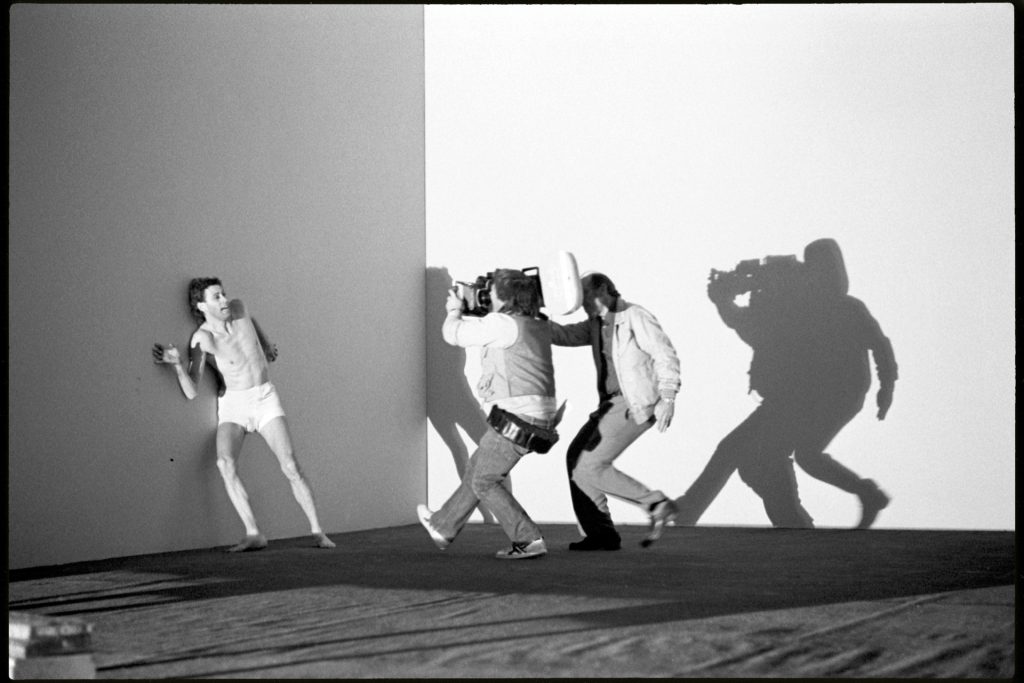
Alan Parker’s work on The Wall is monumental. In the entire 91-minute film a dozen words are uttered, the rest is set to music with the contents of the album: from the reconstruction of the bombing of Anzio where the father of Waters / Pink loses his life, to the regimentation in a meat grinder type school system narrated in the most famous section of the album, at the paramilitary rallies of Pink turned into a Nazi-like leader.
Each scene of the film is linked with the music of the album (sometimes rearranged to follow the narrative rhythm of the film, greatness of the director and Waters) creating a perfect dialogue: music and images chase and intertwine, anticipate and confirm each other both in the filmed scenes as well as in the splendid and heart breaking animations of Gerald Scarfe.
In the complex dialogue between music and moving images a third language is grafted, that of photography. David Appleby is the photographer who, with the discretion and swiftness typical of stage photographers, joined Alan Parker on the set. His images set the key moments of the album’s complex symbology and narrate the stages of the work, alternating the gaze of the documentary photographer, focused on the story, with that of the portraitist capable of fixing the essence of an idea in icons.

Looking at Appleby’s images, we identify some recurrences typical of the complex role of the stage photographer: guest of an already existing narration, witness of the events and translator of the cinematographic in the photographic (close relatives, but not alike in inclination).
Part of the images show the behind the scenes, revealing techniques and teamwork in the creation of the most complex scenes of the film: the crew throwing objects while the students devastate the school that mortifies and annihilates them, the camera that follows – with the physicality of a dance – Pink crushed against the wall of his delirium, the tracking shot that anticipates the intimidating march of squadrons in the suburbs of London.
Moving to a more intimate dimension, Appleby’s eye delves deeper into the relationship between actor and director, dwelling on the moments in which Parker joins Bob Geldof (Pink) in the search for dramatic convergence: Parker showing an empty gaze next to a motionless Pink in the opening scene of the film, Parker writhing with Geldof while Pink is reborn, diabolically, from the symbolic chrysalis of his inner wall.

A further series of images eases the narrative tension, isolating moments in which the actors show themselves in their true nature by creating curious parallels with the dynamics of the story: the oppressive and glacial mother (in the film) who smiles gently at an amused child Pink side by side with an unlikely Roger Waters; Bob Geldof-dictator who poses self-deprecatingly for a far-fetched souvenir photo in the company of squadrons.
Finally, challenging the boundary between static image and moving image, the English photographer consecrates the strongest and most iconic moments of the film, those moments that, already full of tension in the flow of the story, find in the stillness of the photographic a further reinforcement: Pink surrendering to pain, floating with open arms in a swimming pool that is filling up with blood; again Pink posing with a martial gaze in front of the symbols of the new totalitarian party; the image (perhaps the most famous of the film) of faceless students that the school conveyor belt drags towards an inexorable human meat grinder.
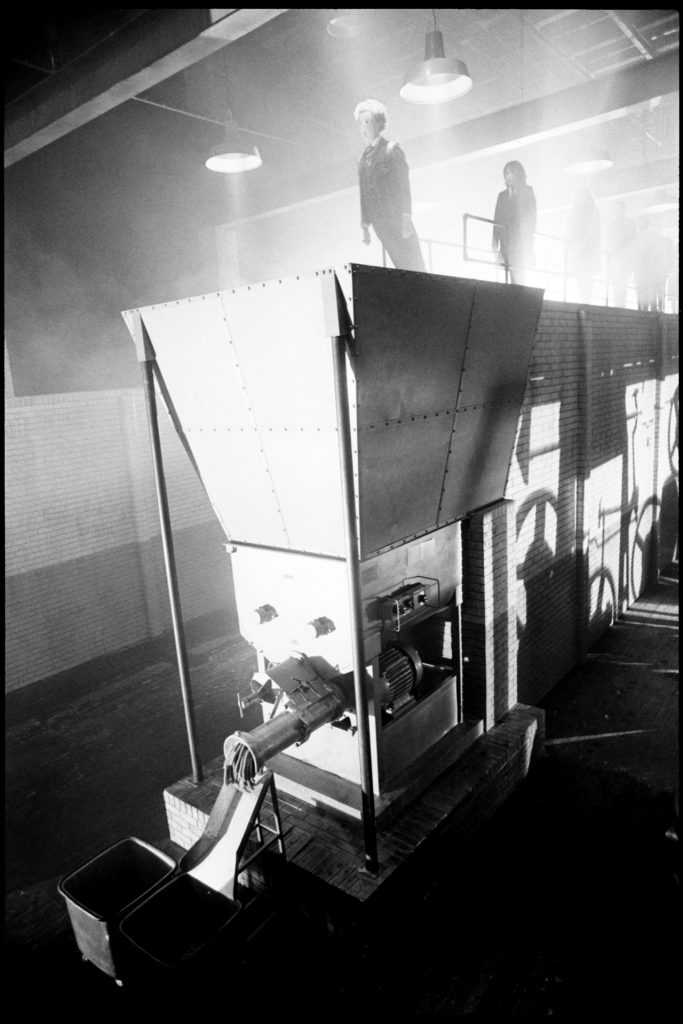
Evanescent figure who wanders behind the scenes on film sets, observer of the truth behind the fiction, producer of icons of the narration, the scene photographer performs a complex and multifaceted task. With Behind the Wall, David Appleby has been able to deal with this complexity with intelligence and skill, giving life to a precious middle ground where photography, cinema and music meet in an unusual and fascinating intertwining of languages to consecrate one of the masterpieces of musical cinema.
All images: © David Appleby
March 6, 2020


